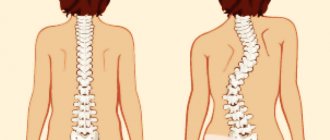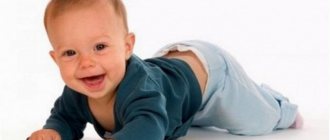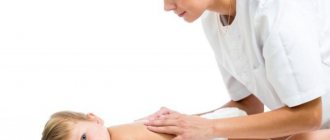A newborn baby seems so fragile to us. His cervical vertebrae at this time are still very weak and fragile. Any wrong movement can result in serious complications for him. It is no coincidence that in the first months of a baby’s life, it is necessary to support his head at all times and not allow a strong load on the cervical spine.
If a baby does not hold his head well at a certain stage of his development, it is important to pay special attention to this deficiency and visit a pediatrician. Modern techniques and procedures can prevent possible complications. The information will be useful for every parent.
First attempts to hold my head
A child can begin to support his head independently only when the muscles of his neck are strong enough for this. We must not forget that the head of a newborn baby is quite large compared to the rest of the body, but this is only a temporary phenomenon. It will be very difficult for weak and unformed vertebrae to hold such a load, and in the first week of life it is generally impossible. A newborn baby, who is already two to three weeks old, while lying on his stomach, tries to raise and hold his head, but attempts in this case do not end in success. Before the baby turns one and a half months old, she will not be able to cope with this task.
Some mothers begin to rejoice when they see that the baby early, already at 1 month, holds his head up on his own. But there is no need to brag about this phenomenon to your friends or acquaintances at work; in this case, you need to go for an examination to a pediatrician or a pediatric neurologist as soon as possible. The reason for this deviation from the normal period of raising the head may be very high levels of intracranial pressure in the baby, which jeopardizes the development of the cardiovascular and nervous systems.
Peculiarities:
- Many babies begin to hold their head upright at around three months of age. Some babies can cope with this task a little earlier, while others only by four months.
- Upon reaching five to six months, the baby begins to confidently hold her head, turning it to any position when she hears sounds or wants to see her toy.
- Another feature is that by the time the baby reaches six months, he can tilt his head to the right and left, is curious and carefully examines the objects and space around him, and turns his head in the direction of his parents.
You need to remember that for the first 3-4 months you should definitely support the baby’s head while you carry him in your arms in absolutely any position. Make sure that its head does not lean back. Sudden and careless movements can negatively affect the child’s cervical vertebrae, damage them and disrupt the condition of muscle tissue.
What affects the condition of the neck muscles:
- The presence of injuries received after childbirth. Some forms of damage received during childbirth slow down the process of physical development of the baby.
- The position that the baby takes while being carried in arms or during sleep.
- The quality of the child’s mother’s diet (during breastfeeding). Lack of vitamins and calcium in the body negatively affects the development of the child’s musculoskeletal system.
What is torticollis in a child and how to treat it?
“Infant torticollis” (ICD-10 code – M43.6) is a common anomaly characterized by a pathological tilt of the neck (mainly to the right side). It is easy to notice the disease - just look at how your child holds his head.
If most of the time the baby holds it “on its side”, the disproportion of the muscles of the face and shoulder girdle is noticeable, and discomfort occurs when straightening the neck - this is an alarming sign of torticollis for a newborn.
If no changes are observed in the neck and back area, but the child likes to hold his head at an angle, this is due to muscle tone.
Causes of torticollis in newborns
According to doctors, the main cause of torticollis in infants is deformation of the soft tissues, bones or nerves of the cervical column. And although orthopedic associations claim that the causes of torticollis are not exactly known, the following hypotheses are put forward:
In this case, as with kyphosis, the vertebrae take a wedge-shaped shape, with a slope to one side.
Because of this, the neck takes on a harmful position, which muscle memory “remembers”;
For more details about the reasons, watch the video:
At-risk groups
Absolutely all infants are at risk for torticollis; the defect can also appear in a child as young as 3 months. Regardless of whether the child was born naturally or through caesarean section. This is a disease from which no one can be immune.
Pediatricians recommend paying attention to children born with a breech presentation. Since during the birth process, the obstetrician makes efforts when pulling the baby, stretching or even tearing of the neck muscles is possible.
The first weeks the illness goes unnoticed. Only on the second or third day can you notice whether the baby is affected by torticollis. If parents are afraid that their child has fallen into trouble, they have the right during patronage (home care provided to pregnant women and newborns) to ask the doctor for additional examination.
Types of torticollis
The medical classification of torticollis includes the following types, forms and causes:
- Congenital torticollis (installation) in newborns:
- Muscular (myogenic) torticollis – changes in the structure and function of the sternocleidomastoid muscle;
- Bone torticollis is a malformation of the cervical ribs and vertebrae. This includes Klippel-Feil syndrome (painful and immobile neck due to fusion in the vertebrae);
- Cutaneous (dermatodesmogenic) torticollis – poor skin elasticity, the presence of abnormal scar structures.
- Acquired torticollis (positional) in newborns:
- Muscular, reflex torticollis – dystrophy and inflammatory processes in the muscles;
- Bone torticollis – provoked by tuberculosis, osteomyelitis;
- Neurogenic torticollis – problems with the innervation (supply) of muscles. For example, paralysis;
- Cutaneous torticollis - obtained due to improper formation of the scar layer after burns or household injuries.
These are the most common varieties.
Some of them are healed by conservative methods, others by more specific ones.
The shape of torticollis is determined and a course of physiotherapy is prescribed exclusively by the attending physician.
Symptoms of torticollis in infants
As mentioned earlier, it is not difficult to determine the disease by eye, but a pediatrician or orthopedist can make an accurate diagnosis. Already after 2-3 weeks of examining and palpating the back of the neck, you can feel that the muscle is stretched. The child begins to wince, initially experiences discomfort, and cannot straighten his neck.
If you do not consult a doctor, torticollis leads to acute consequences:
- “Development” of asymmetry in the face;
- The shoulder girdle on which the head “hangs” will become higher than the opposite one (ischemic necrosis of the muscle);
- Disturbances in the structure of the spine, leading to kyphosis and cervical scoliosis;
- Due to tension in the mastoid process, which extends from the back of the head, the upper and lower jaws may not function properly.
How to determine torticollis in a baby?
To make a diagnosis, the doctor performs two types of examinations: physical and x-ray. In the first case, he palpates the neck for muscle tightness and then tries to gently straighten the head.
If the child cries or screams in pain during this process, this means that the sternocleidomastoid muscle has shortened.
Finally, the doctor takes several x-rays. This helps to study the current condition of the cervical vertebrae, to establish the cause and type of their deformation. In addition, the doctor can confirm or deny the presence of fusion in the vertebrae, which leads to a different development of the disease.
How to fix?
The treatment procedure for torticollis in infants and its types vary from “quiet” to “extreme”. Must be appointed by a qualified specialist.
It is recommended to begin treatment immediately after prescription in order to avoid progression of the disease.
If the cervical vertebrae are not deformed, you should pay attention to conservative treatment, which mainly consists of:
- A gentle massage of the baby’s neck and chest in combination with heating or electrophoresis slows down the development of torticollis until it is cured;
- Special gymnastic exercises for turning the head left and right. They strengthen and stretch the affected muscle group well; Watch the video for a set of exercises:
- Soft “collars” (inflatable or lined with cotton-gauze material), which help fix the head along an even axis, are considered an effective remedy;
- It is also necessary to properly place the baby in the crib and hold it in your arms.
Each case is individual, so consult your specialist.
From personal experience, I can note that a long course of therapeutic massage is a highly effective method of eliminating an illness, without resorting to “heavy artillery.”
However, to do this you will need to find a patient osteopathic master who knows torticollis like the back of his hand, and they are now in great demand! In case of ineffective conservative treatment, surgery is prescribed. The surgical intervention consists of connecting the “legs” of the sternocleidomastoid muscle in the area of their contact with the collarbone, as well as intersecting the superficial cervical fascia. Another type of surgery is artificial lengthening of the sternocleidomastoid muscle using biosynthetic materials.
Prevention of torticollis in infants
Prevention of a disease is aimed at preventing its occurrence or relapse. Osteopaths and pediatricians advise paying attention to the following points to maintain your baby’s health:
- Regulation of physical activity when the baby is standing, safety net;
- Alternating the position of the baby in your arms during breastfeeding;
- Ensure that the child rests after being awake, lying on his stomach. This helps to relax and strengthen the back muscles (called “position therapy”);
- “Forcing” the child to keep his head on the “right” side. Attract his attention with toys and gestures, lay him on the “correct” side, adjust his head with your own hands;
- Sleeping on a hard surface on your back. In this case, it is recommended to place an inflatable roller under the side that the baby “prefers” to minimize the load and habituation. When treating torticollis, orthopedic collars and pillows for newborns will not interfere.
By the way, for future parents there is one interesting life hack from Israeli doctors: make each side of the baby’s crib bright and expressive.
So the child will constantly look here and there. The muscles will not “get bored” in a constant position, but, on the contrary, will be formed equally and correctly.
In addition, place the bed in the center of the room so that the child's attention covers the entire environment.
What will happen if you do not treat torticollis in newborns and infants?
The diagnosis of torticollis requires immediate and decisive action immediately after confirmation. The older the baby becomes, the more difficult it is to treat. And as you know, ignoring the problems of torticollis can lead to irreparable consequences. Firstly, the course of the pathology brings with it changes in appearance: disproportion in the face and shoulders, curvature of the spine, possible squint and protrusion of the jaw. The chance of neurological problems cannot be ruled out.
Lack of treatment is tantamount to disturbances in the supply of the brain, leading to disorders of the vegetative-vascular system (for example, cervical (spasmodic torticollis) dystonia), migraines, hypoxia (oxygen starvation), etc.
As a result of changes in the skull and muscle structure, problems with hearing and vision may occur, but on the “affected” side.
Remember that the happy future of your child depends only on you, the parents. As the ancient Greek medical proverb says, “The key to a successful recovery is treatment carried out on time.” Be alert and happy!
How to recognize the disease?
The syndrome is easily recognized during external examination of the newborn. With this disease, the baby’s neck is practically absent, his body seems to shrink, his head goes down, and his shoulders rise.
Sometimes characteristic folds of skin, similar to wings, appear between the body and head. But parents shouldn’t always panic if their child’s neck is hard to see. All babies have a large head compared to the body and plump cheeks, which make the neck appear to be very short. The following signs will help identify the disease:
- Low hair growth on the back of the baby's neck.
- The shoulders are raised, and their asymmetry is often observed.
- The baby's head seems to be pressed into the shoulders and tilted back slightly.
- Skin folds are visible behind the ears.
- The newborn's neck is inactive.
- The chin rests on the chest (with a strong anomaly)
In addition, improper development of the neck can impede the supply of oxygen to the baby’s brain, and the child becomes restless, sleeps poorly, and often cries.
What Causes Short Neck Syndrome?
The presence of pathology is due to a genetic factor that is not influenced in any way by external conditions. The syndrome occurs in those children whose parents are carriers of the corresponding genes, and it is enough that only one of the parents has a predisposition to this defect. At the same time, the father or mother may not even realize that their genes contain a “defective” gene that they inherited from their ancestors.
The developmental defect occurs during the embryonic period, and it can be detected even before the birth of the child.
Diagnosis and treatment of this anomaly
In addition to the external examination, doctors prescribe x-rays of the corresponding part of the spine for infants with signs of short neck syndrome. The examination gives a clear picture of what type of pathology is present in the newborn. It could be:
- Fusion of the upper or lower vertebrae of the neck.
- Their size is small.
- Absence of one or more vertebrae.
The absence of some vertebrae is extremely rare. Most often, children are born with fused vertebrae, which limit mobility and cause muscle strain and pain. Typically, these conditions resolve on their own in children under one year of age and do not require surgical intervention. If the pathology is severe and does not disappear over time, the patient needs surgery to separate the combined vertebrae.
Unfortunately, short neck syndrome cannot be treated, as it is a congenital feature of the body structure. To prevent the deformation from affecting the development of other organs, children are prescribed to wear a Shants collar. This soft bandage supports the baby's neck and helps improve oxygen flow to the brain. In addition, the neurologist prescribes massage, electrophoresis and physical therapy for the small patient.
What can be done to alleviate the baby's condition?
Depending on the severity of the child's condition, parents can use various methods to reduce the symptoms of the disease. First of all, it is necessary to strictly ensure that the Shants collar is worn for as long as recommended by the doctor. The bandage must be of the appropriate size and made of high-quality material. To prevent the device from rubbing the delicate skin of the newborn, the neck must be lubricated with moisturizing oils and creams.
Therapeutic massage and physical exercise have a good effect on eliminating the symptoms of the disease. These manipulations can only be carried out by specially trained personnel. It is the responsibility of parents to select a highly qualified specialist and properly prepare the child before the procedure - feed the baby about an hour before the massage and, if possible, calm him down.
In addition, pediatricians recommend applying wax at home. This treatment uses a warm compress to help relax tense neck muscles and soothe pain.
It is not difficult to make an application at home; melted wax is poured onto previously prepared patterns from cellophane film, and after partial cooling, it is laid out on the child’s collar area. Cover the top with a towel or scarf to keep warm. During the procedure, you need to ensure that the temperature of the wax is not too high for the baby’s delicate skin. After removing the compress, you can do a very light, stroking massage.
What kind of massage does a baby aged 6-12 months need?
If your child already weighs 5 kg or more, then you can add rubbing, light pinching, and gentle movements with the ribs of the palms to the general massage.
We invite you to read: Doa 1st degree hip joint treatment
The baby’s buttocks can be kneaded with fists, the chest can be kneaded using slight vibration, and the back can be lightly tapped with the pads of your fingers. But don’t forget that the child is still very small and there is no need for effort here. All movements should be light and without pressure!
Any massage begins with stroking, then we add rubbing and light tapping. For children at this age, you can include clapping with your palms. During the session, which can last 25-30 minutes, you can work on only one part of the body or do general massage exercises.
Mandatory consultation with a doctor as the key to successful treatment of neck pain
The feeling of pain in the cervical spine should be the first signal to visit a specialist. Only a qualified doctor will be able to select adequate therapy for each specific case and give useful advice on the composition of the exercise therapy complex, the intensity of exercises and the permissible individual load.
For each specific case, specialists will give appropriate recommendations for the treatment of the disease, including not only medication, massage and physiotherapeutic procedures, but also physical therapy exercises.
In this case, the doctor will advise, if necessary, to use a special soft corset for the neck, which prevents trauma to the inflamed area, and will also limit gymnastics to isometric exercises, excluding dynamic loads during the period of exacerbation.
In any case, therapeutic exercises for neck pain are one of the components of a single complex of therapy and prevention of osteochondrosis. The big advantage of such exercises is the ability to perform them both under the supervision of an instructor and independently - several repetitions under the supervision of a specialist will allow you to quickly master the specifics and rules of performing healing movements.
Systematic exercise therapy for osteochondrosis of the cervical spine is not only one of the effective ways to treat a complex disease, it is also the prevention of worsening problems with the spine, a panacea for all people whose work involves staying in one position for a long time, an effective help for depression, recovery own health and choice in favor of an active lifestyle.
How to check your muscle development level
It is very important to understand at an early age whether the baby is developing correctly. One of the tests is the ability to hold your head correctly.
To conduct an examination of a child , there is no need to go to the hospital for this, since any parent can handle this at home.
What do we have to do:
- Wait until the child is one month old.
- Lay him on his stomach, take any rattle, rattle it above the area where the head is located.
- If the level of development of the child’s nervous system is at a normal level, then he will begin to raise his head a little and try to look at the toy.
- If there are certain abnormalities in the baby’s nervous system, then he will not even be able to slightly raise his head. In this case, the parent’s main task will be to go to a pediatric neurologist to understand the cause of the disease.
The benefits of standard massage for children
A general tonic massage for newborns is not only pleasant, but also useful:
- massage helps improve metabolic processes;
- activates performance;
- helps to concentrate attention;
- relaxes the baby;
- relieves unhealthy drowsiness;
- improves the functioning of the cardiovascular system;
- stimulates brain function.
In addition, massage promotes the proper development of the child’s musculoskeletal system, helps prevent various diseases and strengthens the baby’s connection with his parents.
Therapeutic gymnastics for neck pain: the main objectives of the complex
The main goal of performing exercises for neck pain is to minimize the symptoms of osteochondrosis, prevent complications, and reduce pain intensity.
At the same time, the key to the effectiveness of the use of therapeutic exercises for the cervical spine is the systematicity and consistency of exercises.
Exercises for pain in the cervical spine help minimize the symptoms of osteochondrosis, providing action in the form of:
- Relieving spasms and pain;
- Improved blood supply to the spine;
- Elimination of puffiness;
- Preventing the occurrence of osteophytes;
- Restoring lymph outflow;
- Returning the elasticity of ligaments and muscles;
- Strengthening the cervical vertebrae and muscles;
- Improving the general condition of the body;
- Normalization of the functioning of organs and systems;
- Improves mood.
What exercises will help strengthen your neck muscles?
Very often, after examining the child, the specialist says that everything is fine with the nervous system, there are no birth injuries, you just need to carefully monitor the physical development of the baby. It may also be that the parents spent little time on the physical development of the baby, did not work with him well and did not put him on his stomach. In this case, the pediatrician prescribes a simple course of exercises that will need to be repeated every day.
Basic exercises to strengthen the neck muscles:
- The main thing is to put the baby on his tummy more often by the age of three weeks. While awake, between feeding periods, it is imperative to perform such actions. At this time, due to an innate reflex, the baby begins to slightly raise his shoulders and tries to turn his head to the side. Frequent tension of these muscles helps them become significantly stronger.
- Massage for a newborn is an easy but effective method that gives the baby’s muscles special strength. To perform a massage, you can hire a specialist and learn this technique from him or look at pictures and videos on the Internet. Movements at this time should be soft and rubbing, you need to move carefully towards the heart.
- Be sure to monitor your baby's position while sleeping. Every 6-7 days, change the position of the child in bed. Try to place your baby's head in different directions. With such manipulations you will prevent excessive tone in the neck muscles on only one side.
- Another useful recommendation: make sure that your child does not constantly fall asleep in his usual position.
- Doctors advise parents of their baby to teach him to swim from an early age. Immediately after the umbilical wound has completely healed, you need to start training. A special inflatable ring helps keep the baby's head above the water; while swimming, motor skills develop. It is also imperative to provide the most comfortable conditions for the child in the bath, only in this way will the baby swim with pleasure and interest.
- Monitor the mother's diet closely. Breast milk must contain sufficient calories. Otherwise, the child will not receive enough nutrients and microelements. Insufficient weight gain negatively affects the general condition of the baby. Over time, begin to accustom him to a structured daily routine: this way, children gain weight much better, their sleep becomes better quality, and their character is calmer.
- Has the baby reached 7-8 weeks of age? Start doing a useful exercise with him: carry your baby in a horizontal position (hold your body with your stomach down). One of the mother’s hands must necessarily support the tender neck so that a straight line appears, while the second should be located under the tummy.
- There is one more exercise that needs to be done after the baby reaches two months. At this time, you need to hold the back of the head and lift the child vertically. You need to continue carrying the baby in this position for several minutes. The exercise is repeated 3-4 times a day.
Why do you need gymnastics for the cervical spine?
Disorders in the cervical spine have a detrimental effect on a person’s overall well-being. After all, the main vessels supplying the brain pass through here. Here, large nerve trunks that participate in the innervation of the head, neck, and upper extremities depart from the spinal cord. Various disorders in this part of the spine manifest themselves in intense headaches (hernia, protrusion, spondyloarthrosis, spondylosis, osteophytes, with chondrosis), increased intracranial pressure, numbness and paresthesia of the hands. The quality of a person’s life deteriorates and sleep is disturbed. Therefore, it is so important to take care of your health in time and perform special gymnastic exercises for the cervical spine.
Exercises and physical therapy (physical therapy) for the cervical spine will serve you well in the prevention and rehabilitation of all kinds of complications.
Desirable time for massage
Pediatricians warn that restorative massage for infants should not be done immediately after feeding. Some time must pass (about 15-20 minutes) for the child to have time to release air (burp), otherwise there is a risk that he will choke during the massage.
In general, it is recommended to massage your infant twice a day: in the morning after using the toilet and in the afternoon, just before meals, for about 20 minutes.
It is worth noting that many experts believe that massage on an empty stomach will only cause harm. And if the child has eaten, then the exercises can be done an hour after feeding. Different specialists have different views on massage, so you yourself should listen and take a closer look at your child: exactly when he is comfortable with the exercises, when he is more often in a good mood and how he feels 20 minutes after feeding.
All experts agree that you should not do a tonic massage just before bedtime, otherwise the nervous system will be overexcited and the child will stay awake for a long time.
The child can't hold his head up
When the baby reaches 5-6 weeks, this state of affairs indicates problems in the baby’s body. Most often, in this case, it is the parents who are to blame for not following the recommendations from pediatricians. In some cases, the doctor identifies a congenital or acquired pathology in advance, or reports a low level of nutrients in the baby’s body, which occurs due to poor nutrition.
You need to be able to pay attention to the main reasons:
- Weak muscle tone and torticollis.
- Receiving certain injuries during childbirth.
- The baby is considered premature.
- Parents do not place the baby on their stomach, or they do, but very rarely.
- Lack of nutrients in the body, malnutrition.
- Pathologies associated with the nervous system.
Contraindications
Remember, along with the undoubted benefits of a set of therapeutic exercises and gymnastics, there are also certain contraindications (your doctor should warn you about them):
- Exacerbation of any chronic disease.
- Infection.
- Myocardial infarction.
- Tumors, malignant and benign.
- Heart rhythm disturbances and high blood pressure.
- Insulin-dependent diabetes mellitus.
- Vision problems associated with the retina and fundus of the eye.
Gymnastics for the cervical spine is the path to its health, and it doesn’t matter whether it’s exercises at home or on a specialized simulator. Remember, if your back is in great shape, all your internal organs work like clockwork. A failure in one of the departments is a direct path to a whole bunch of diseases, including depression, vegetative-vascular dystonia, chronic fatigue and much more.
From this article you will learn what to do for neck pain? What muscle exercises will help relieve stress and fatigue from the cervical spine? Are all neck exercises suitable for people with different diseases? And what is the actual cause of neck pain? We advise you to pay close attention to the material in the article. Our specialists answer all your questions about this problem and provide clear guidelines for action!
Content
Throughout our lives, our spine experiences significant stress. Static and mechanical effects on the cervical region create the basis for various diseases. The well-known disease of our time - cervical osteochondrosis - is spreading by leaps and bounds. Neck pain also occurs with other diseases, such as:
- spondylosis
- spondyloarthrosis
- osteophytes
- protrusion
- hernia
- chondrosis
Today, osteochondrosis is becoming more and more common, and in all age groups. It's all about the non-physiological position of the head relative to the axis of the spine during work, rest and even sleep.
The cervical spine is a very important and at the same time fragile structure. It consists of seven vertebrae connected by special cartilage - intervertebral discs. Blood and lymphatic vessels and nerves pass through the openings of the vertebrae.
The photo below shows the relationship of the elements of the cervical spine.
From six months to a year
You can begin exercise therapy when your baby reaches six months. At this age, the baby is already trying to sit up and learning to roll over. Gymnastics will allow you to move more actively and learn to crawl faster.
Charging consists of several procedures:
- .For this exercise you will need a fitball. A 6-month-old child is placed on a gymnastic ball with his stomach, feet facing him. At the same time, he is supported by the armpits, swinging back and forth on the ball. When the baby arches, you need to hold for 5 seconds, then continue. Repeat 5–10 times.
- You need to take the baby, supporting your legs and pelvis with your hands, lean forward with him, hold for 5 seconds, and then straighten up. All movements must be done slowly. Repeat 3-5 times.
- The baby is placed on a flat surface and turned over on his stomach. In this case, you should help him by easily turning his pelvis and buttocks in the right direction.
- A massage for the back of a 6-month-old baby is done as follows: the child lies on his stomach, and the adult strokes the muscles with light movements of open palms. Further, the movements become more intense, the body is rubbed in the direction from the spine to the sides. Then you need to lightly pinch the baby's back. The massage should be completed with stroking. All movements are repeated 3–5 times. It is important to know: you cannot touch the spine, all movements should be directed only at the muscles.
Cervical osteochondrosis: clinical features
With cervical osteochondrosis, negative changes are observed in both the spine and cartilage tissue. Reduced mobility of the cervical spine leads to pinching of nerve endings and blood vessels, causing symptoms of varying intensity and nature.
Depending on the nature of the pathological process, the following types of disease are distinguished:
- Irritative-reflex disorder with severe pain in the back of the head and neck, which has a boring character. The pain may radiate to the chest, shoulder and forearm;
- Cervical radiculitis, manifested by irradiation of pain from the neck to the shoulder blade, forearm and fingers. With this pathology, numbness of the hand and fingers may occur;
- Cardiac syndrome with localized pain in the area of the shoulder blades, neck and heart, which becomes more intense when turning the head, sneezing, etc.;
- Pathology of the vertebral artery is the most dangerous syndrome, the symptoms of which are severe headache, dizziness, blurred vision, and tinnitus.
When not to massage
https://www.youtube.com/watch?v=8qej941exGY
Here is a list of some contraindications and cases when it is not recommended to massage a child:
- if the baby is less than 20 days old;
- if you observe a child with indigestion;
- Do not massage if your baby has an infection. The baby’s body will be busy fighting it;
- if a baby has a rash, prickly heat, or redness on the skin, then it is better to refrain from massage;
- when the child has a fever;
- the presence of any exacerbations or allergies;
- heart disease, circulatory disorders;
- if the child has a large hernia;
- liver or kidney dysfunction;
- the presence of a disease that makes bones brittle;
- if you notice that your son or daughter is capricious, then do not insist on a massage;
- if you yourself are irritated, feel tired, and anxious, then it is also better to postpone this event.
General massage for infants is always pleasant, useful, necessary and irreplaceable in the early stages of a child’s life. You can always do a massage at home with your own hands, giving your baby joy and care, affection and protection. The simplest and lightest strokes of mother's hands can work wonders. If you are still afraid to do a general massage yourself, then it is better to entrust the procedure to a professional. He will massage your baby with you, tell you the subtleties and rules, and teach you how to hold the baby correctly during the session.
Tags: baby, do, massage, possible, muscle, back, strengthening
About the author: admin4ik
« Previous entry
How to fix the problem
- First, you should seek help from a pediatric neurologist. After a complete examination, he will refer you to an experienced massage therapist. The sooner you start working and developing the neck muscles, the faster you can achieve the desired effect and avoid complications. In some cases, the procedure will last two to three weeks, while others require many more sessions.
- Undergoing effective physical therapy, electrophoresis or paraffin therapy.
- Torticollis can be eliminated in a child using an ultrasound of the cervical spine. If signs of pathology are detected, a pediatric neurologist can prescribe a course of treatment.
- It is useful to give your baby a special orthopedic pillow during sleep, which limits the child’s head from turning in a certain direction.
- If it is difficult to find a special pillow in the store, then you can create a cushion from a diaper yourself, and then place it around the baby’s head so that he can look in front of him. For extra comfort, place cotton wool inside: this will make the device soft and also more comfortable for the baby.
- Hang an eye-catching toy above the bed, but it should be hung exactly in the center. This way the baby will not look only to the right and left.
- Every new week, change the baby's position to a new one. A simple trick: changing the legs and head will prevent torticollis from developing.
- Doctors point out two points: from which side you are approaching the child and where the light is coming from. If the sides are the same, then there is a high possibility that on one side of the baby’s neck the muscles will become more tense, and on the other, relaxed.
Classes at Drevmass
You can do exercises on the cervical spine by doing just 5 minutes a day on a special Drevmass simulator designed for these problems. The exercise machine is excellent for neck pain, as well as for existing osteochondrosis of the cervical spine.
You can see how gymnastics is done on the Drevmass simulator for a cervical hernia in this video:
- The Drevmass simulator acts not only on the symptom, but also on the cause of the disease! Relieves stress from intervertebral discs, stretching the spine in length. The action occurs due to rollers of various sizes.
- Improves blood supply to cartilage and nutrition of discs due to its effect on the paravertebral muscles of the back! Thus, it has a positive effect on the functional state of cartilage and discs.
- Tones the back muscles, strengthening and stabilizing them. Positively affects the elastic component of the intervertebral discs!
If you would like to consult on the prevention and self-treatment of spinal diseases using professional Drevmass simulators, we will be happy to answer you by calling our toll-free hotline 8 800-700-37-79 or by email
You can also request a call back or leave your feedback/suggestion.
We hope this material was useful to you, and we wish you health and long life!
Excessive physical stress on the vertebrae, injuries, age and regular work at the computer very often cause spasms of the cervical muscles, become the cause of painful conditions, and lead to a fairly common disease - osteochondrosis of the cervical spine.
Therapy for this disease is a complex complex of both medications and physiotherapeutic measures, including surgical interventions. An effective part of the therapeutic course and an excellent prevention of osteochondrosis will be therapeutic exercises for the neck.











